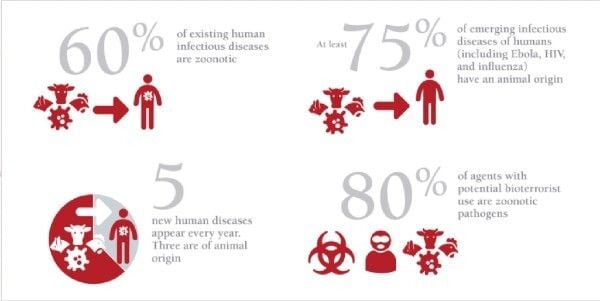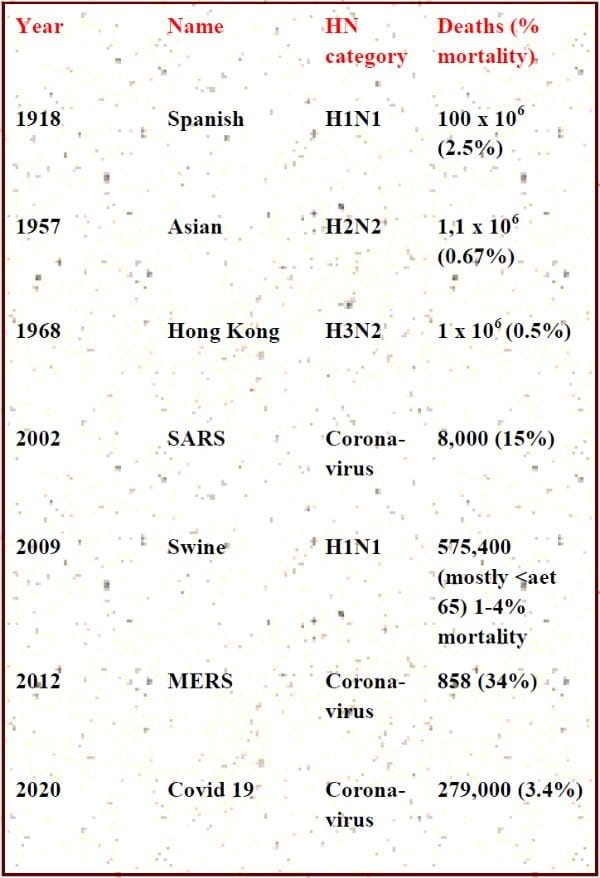Maternal & perinatal mortality in the Spanish Influenza pandemic 1918-1919
)
In this current pandemic of COVID-19 (SARS-CoV-2) it is easy to think that the health risks to Australia have never been more dire. In pregnant women there is understandable anxiety about the risks to them and their unborn babies.
However in the first 3 months of this pandemic from March to June 2020 there have been no COVID 19 Australian maternal deaths and few SARS_COV 2 infections amongst the pregnant Australian population. By 10 May 2020 the COVID-19 pandemic had infected 3.7 million people worldwide and killed 261,000 in 187 countries.
The Spanish flu which began at the close of WWI in Spring 1918 on the other hand infected approximately one third of the world population (~500 million) and up to 100 million died. Several factors probably contributed to the high prevalence and death rate: malnutrition with low immunity, poor hygiene, overcrowded accommodation, no available antibiotics, no ventilators, poorer understanding and availability of effective quarantine controls. The high mortality in healthy people, including those in the 20-40 year age group, was a unique feature of this pandemic. In the US one study of 101 pregnant women presenting with pneumonia in Cook County Hospital in Chicago doctors found that the maternal death rate was 51.4% compared with 33.3% in the non pregnant population. In general the women were of low socioeconomic status. Half of the women died in the first 24 hours and 73% within 48 hours. Of those 52 women who died fetal death also occurred in 39 cases and in the 49 surviving women 21 went into premature labour or miscarried. Two babies born alive also developed bronchopneumonia within 24 hours of birth (probable vertical transmission). A US Navy nurse described the daily ordeal of Spanish flu in these words:
The morgues were packed almost to the ceiling with bodies stacked one on top of another. The morticians worked day and night. You could never turn around without seeing a big red truck loaded with caskets for the train station so bodies could be sent home. We didn't have the time to treat them. We didn't take temperatures; we didn't even have time to take blood pressure. We would give them a little hot whisky toddy; that's about all we had time to do. They would have terrific nosebleeds with it. Sometimes the blood would just shoot across the room. You had to get out of the way or someone's nose would bleed all over you.
The second wave of Spanish flu occurred in September 1918, 6 months after the first wave in March and this caused many more deaths than the first wave. One of the aftermaths of that epidemic was that both male and female offspring of affected mothers had reduced life expectancy and higher mortality rates from cancer and heart disease .There were higher rates of hospitalisation in Sweden for these offspring at ages 54-87 years.
In February 1957 the Asian flu epidemic (H2N2) commenced in Singapore and caused an estimated one million to two million deaths worldwide and is generally considered to have been the least severe of the three influenza pandemics of the 20th century. One Irish report suggested that the rate of neural tube defects such as anencephaly doubled in that epidemic (Coffey et al,1959). There was also evidence of an increase in cleft lip and reduction deformities (McKenzie et al,1974). There was also a report of increased rates (3x) of schizophrenia in the offspring of women who developed influenza (Brown et al,2004). A second wave of the pandemic occurred in 1957 and this was far more deadly than the first wave. The rapid development of a vaccine against the H2N2 virus and the availability of antibiotics to treat secondary infections limited the spread and mortality of the pandemic.
In the Swine flu epidemic in 2009 also a H1N1 Influenza A viral infection the maternal mortality was also high (20 fold higher than the death rate from seasonal influenza between 1998 and 2005). Here in St George area there were several cases of severe postpartum pneumonias in 2009.

Influenza Viruses: Influenza is caused by any of several closely related RNA viruses. Influenza viruses are categorized as types A, B, C, and D. These major types generally produce similar symptoms but are completely unrelated antigenically, so that infection with one type confers no immunity against the others. The A viruses cause the great influenza epidemics, and the B viruses cause smaller localized outbreaks. The C viruses cause only mild respiratory illness in humans. Influenza D viruses are not known to infect humans and have been observed only in pigs and cattle.
Influenza and Covid 19 Influenza Viruses (H & N)
The 1918 virus was notable for its ability to produce rapid and severe lung damage. This was attributed to the H (Hemagglutinin gene) which facilitates the entry of virus into healthy cells of the human respiratory tract). The Neuraminidase gene (N) codes for surface proteins that allow the virus to escape an infected cell and infect other cells).
Water birds are the reservoir for all H & N proteins and the source of most human pandemic strains. The Spanish flu virus was genetically analyzed from samples taken from bodies obtained in an Alaskan mission - Brevig, buried under snow - a village where 72 of the 80 inhabitants died in a 5 week period in 1918. Investigators from the CDC in Atlanta concluded that the HA and PB1 (polymerase which accelerates virus replication) genes played a particularly important role in the 1918 virus's infectivity and severity. Other experiments in mice demonstrated that the Spanish flu could not spread to other organs such as brain, heart, liver and spleen.
A study of US pregnancies in Baltimore of the Asian flu pandemic in 1957 demonstrated increased rates of abortion, stillbirth, neonatal death and congenital malformations. There has been Australian work in pregnant guinea pigs subjected to high temperatures which showed increased rates of neural tube defects in
delivered offspring

SARS (SARS CoV) and MERS which are coronaviruses originated in microbats such as the horseshoe bat. Both SARS & MERS spread to civets and camels as intermediate hosts before infecting humans. The fruit bat is known to be the origin of Nepah virus and Hendra virus. Ebola and Marburg virus also originated in bats
Coronavirus control China and SE Asia are thought to be the site of emergence of new pandemic influenza strains probably because humans, waterbirds such as ducks and geese and pigs share common dwellings providing the perfect conditions for cross-species transmission.
The control of bat-borne viruses by international organisations such as the WHO, the FAO and the OiE (World Organisation for Animal Health) is made difficult because none of these organisations are equipped with sufficient legal framework to compel member States to report outbreaks in a timely fashion under the International Health Regulations or to enable their representatives to enter countries with potential outbreaks. The current Covid-19 pandemic has prompted discussions about a similar set of WHO powers as currently applies to chemical and nuclear weapons UN treaties.
Covid 19 in Pregnancy: Of the 657 cases of Covid 19 in pregnancy in 14 countries the stillbirth rate was 3/1000 and the neonatal death rate was 5/1000. Sixteen studies reported on pregnancy-related complications: 17.4% delivered preterm before 37 weeks, 4.7% had preterm premature rupture of membranes, and 73.5% were delivered by caesarean section. There were 2 cases of probable vertical transmission in China and Peru. The maternal mortality is not yet known but seems unlikely to exceed average mortality rates in the non-pregnant population. The overall mortality in Australia and New Zealand of Covid 19 is 1.4% compared with 14.7% in the UK and 13.9% in Italy and 11.8% in Spain. This compares with deaths from seasonal influenza which are usually less than 0.1%.
Bats and Coronavirses. There is no connection between bats and influenza although bats do have a version of influenza called H17 and H18. However bats do harbour many coronaviruses. Shi Zhengli - a Chinese biologist - has discovered hundreds of coronaviruses in horseshoe bats in Shitou Cave on the outskirts of Kunming (capital of Yunan province). Dozens of these are related to SARS CoV. The control of zoonoses is of paramount importance as 75% of new human infectious disease is thought to originate in animals.
Further Reading
Woolston WJ,Conley DO. Epidemic Pneumonia (Spanish Influenza) in Pregnancy. JAMA 1918 71(23: 1898-9. ;Callaghan WM,Creanga AA,Jamieson D. Pregnancy-Related Mortality Results from Influenza During the 2009/2010 Pandemic Obstetrics and Gynecology 2015 126(3):486-490;Coffey V,Jessop WTE. Maternal Influenza and congenital deformities : a prospective study. Lancet 1959.i i:1935-7.;Louie JK et al Severe 2009 H1N1 influenza in pregnant and postpartum women in California Am J Obstet Gynecol. 2011;204:144.e16
| Tags:MiscarriageObstetrcisOther |







